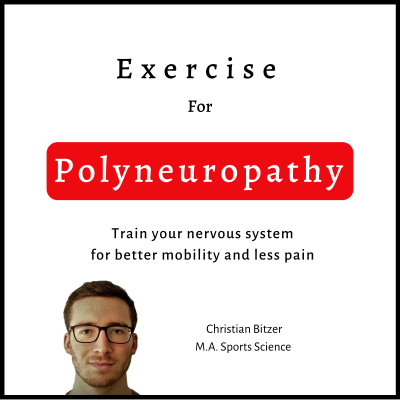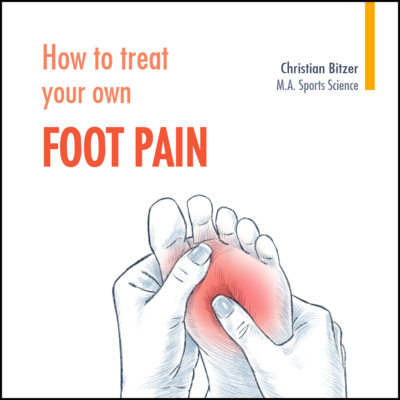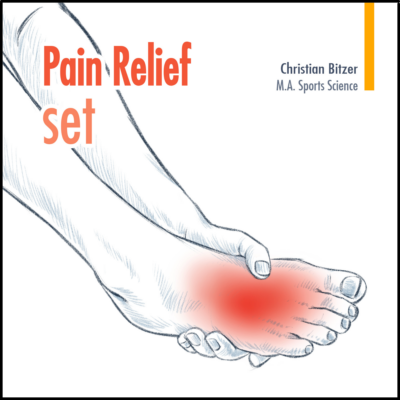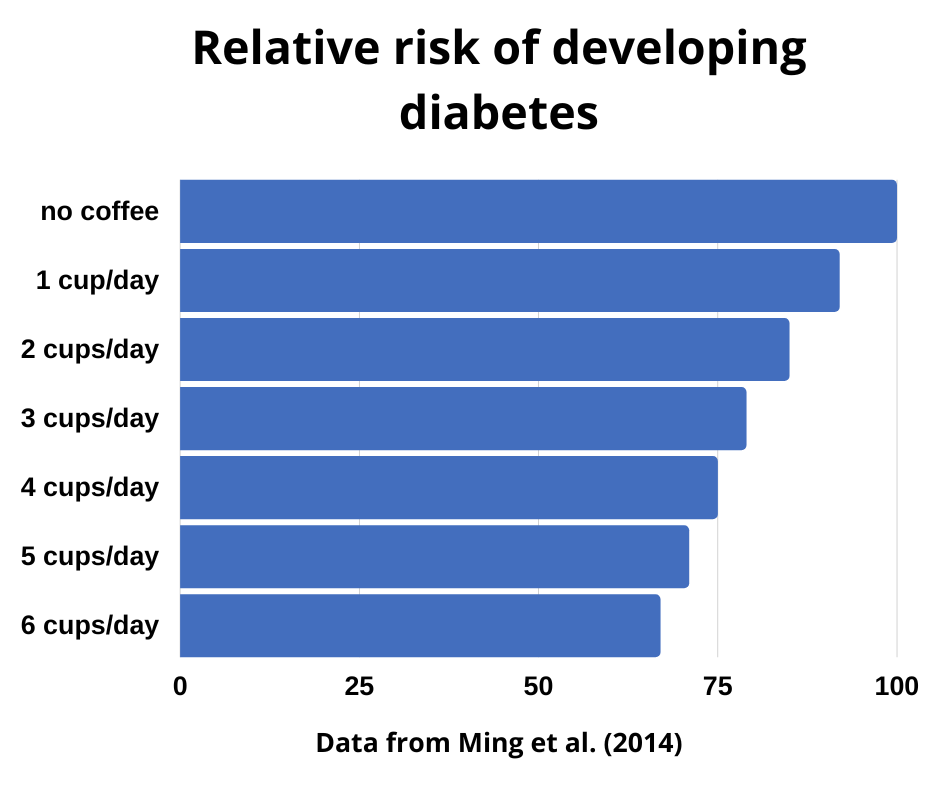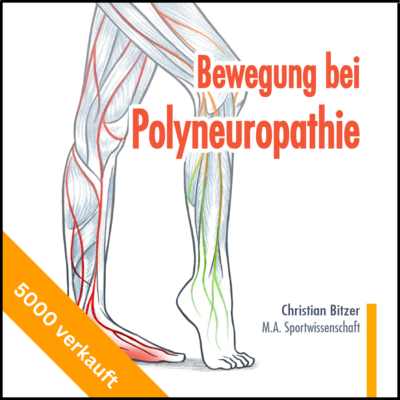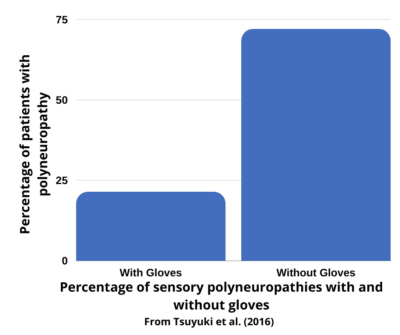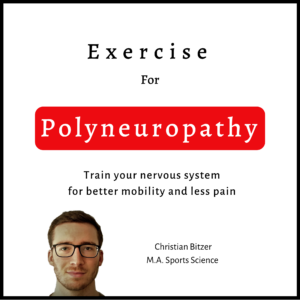
Polyneuropathy and Life expectancy
- 6. May 202012. May 2023
- by Christian Bitzer
Do you die earlier if you have polyneuropathy?
Everyone who suffers from polyneuropathy wonders if the disease will cause you to die sooner in addition to the many limitations it causes. I have read the scientific studies on the subject for this article and would like to answer the question: Does polyneuropathy reduce life expectancy? Or is polyneuropathy even fatal?
And if so, what can you do about it?
Briefly summarized
People with polyneuropathy live slightly shorter lives on average than people without polyneuropathy (80 vs. 86 years).
However, polyneuropathy itself is not fatal. Reduced life expectancy results from several factors:
The physical weakness due to limited activity, the higher risk for falls, and the diseases that trigger polyneuropathy such as diabetes, alcohol addiction, and cancer.
To maintain life expectancy despite polyneuropathy, targeted physical training is helpful. If another disease (e.g. diabetes) has triggered the polyneuropathy, it should be closely monitored and treated by a physician.
People with polyneuropathy live slightly shorter lives on average
To find out how long the life expectancy is in polyneuropathy, I searched scientific databases, especially Pubmed. There I found a study by an American research group. They compared the life expectancy of polyneuropathy patients with that of people without polyneuropathy. This involved collecting data on health from people in an entire county since 1966. The study included nearly 3000 people who suffered from polyneuropathy.
The researchers now compared those who had polyneuropathy with study participants who did not.
In this study, the average life expectancy of people with polyneuropathy was 80 years. Study participants who did not have polyneuropathy lived to 86 on average (You can read the study here: Hoffmann et al. 2015)
I also found two other studies that looked at diabetics. Life expectancy of diabetics with polyneuropathy and diabetics without polyneuropathy was compared (Simoneau et al. 2019, Hsu et al. 2012). Diabetics with polyneuropathy had a lower life expectancy than diabetics without polyneuropathy.
But does that mean that polyneuropathy is deadly? According to the studies mentioned, it is not clear why people with polyneuropathy died earlier. Thus, polyneuropathy is explicitly not listed as a cause of death.
People with polyneuropathy die slightly earlier on average - is polyneuropathy fatal?
Does polyneuropathy lower life expectancy? Or are there other reasons?
Because dying earlier with polyneuropathy does not mean dying OF polyneuropathy.
Indeed, the nerve damage in polyneuropathy rarely leads to death. This is because it does not affect vital organs. The disease usually limits nerve function in the periphery of the body. This means that the problem initially affects the hands and feet and only in later stages also the thighs and upper arms. This is bad, but not acutely life-threatening.
The disease would be life-threatening if the nerves that supply vital organs were damaged to such an extent that the organs could no longer function and you would die because of that. There are actually nerve diseases where this can happen. For example, the nerves that supply the respiratory muscles or the heart may stop working, and as a result the work of these organs may deteriorate (for example, in cardiac autonomic neuropathy). However, this rarely happens in polyneuropathy. So polyneuropathy is not fatal (or only very rarely and in special cases).
The reason for the shorter life expectancy of people with polyneuropathy therefore lies elsewhere. The studies mentioned above also provide indications about what the reasons for the lower life expectancy may be.
One reason is that people with polyneuropathy suffer disproportionately more often from other serious diseases that then cause polyneuropathy. This applies to diabetes as well as to cancer and alcoholism, kidney damage and circulatory disorders. These diseases in themselves lower life expectancy. Thus, the statistically lower life expectancy of people with polyneuropathy compared to healthy people may be caused by the severe diseases that result in polyneuropathy.
However, the scientists mention other reasons as well:
The people with polyneuropathy had a much higher risk of falling and were much more likely to have limited mobility. They also more frequently had problems with managing their daily lives alone and more disorders of blood circulation, problems with their heart as well as lung diseases. In other words, they were physically weak and suffered from diseases related to lack of exercise.
How can you increase life expectancy despite polyneuropathy?
Can life expectancy be maintained normally despite polyneuropathy?
For me as a therapist (and certainly for you as a patient), it is not enough to know, that people with polyneuropathy die earlier.
I want to know:
What can be done about it?
So, how can life expectancy be increased despite polyneuropathy? According to my education, I look at this question from a sports science point of view. Of course, other disciplines can contribute to better health despite polyneuropathy, but I will stick to my own area of expertise. So I am explicitly not talking about medical treatment here, but concentrate on the possibilities that physical training offers.
Proper exercise produces impressive effects on everyone's health. Physically active people therefore have a higher life expectancy, even if they suffer from polyneuropathy. Therefore, in this article I would like to show you how physical activity can help despite polyneuropathy. To do this, it is important to know what problems are common among people with polyneuropathy that contribute to lower life expectancy and that can be improved through training.
Falls and physical weakness lower life expectancy
Two problems that almost all people with polyneuropathy have in common are an increased risk of falling and reduced physical performance.
Falls are much more dangerous than most people realize - especially in old age. Among those over 65, falls account for up to one-fifth of emergency hospital admissions (Peel et al. 2011).
Anyone who falls and is seriously injured in old age runs the risk of loosing his or her ability to live independently. This is not only true for the famous femoral neck fracture. Falls are also one of the most common causes of brain trauma and spinal injuries. Once you suffer such an injury, you often get into a downward spiral that unfortunately quite often ends with people no longer being able to care for themselves and ending up in a nursing home. Of course, further health problems then follow and life expectancy also decreases.
However, the risk of falling is significantly increased when suffering from polyneuropathy. Most people with polyneuropathy know this from their own experience and numerous patients have already told me about how they fell.
Therefore, in order to improve your safety, life expectancy and especially quality of life despite polyneuropathy, you should try to reduce the risk of falls as much as possible. At the same time, however, you should remain as physically active as possible. This may seem like a contradiction, because someone who moves a lot is more likely to fall than someone who spends their days sitting on the couch.
However, if you stop moving for fear of falling, you will suffer all the negative health consequences of the lack of movement. Muscle strength and bone strength, for example, decrease, making you more susceptible to injury. In addition, movement control deteriorates, increasing the risk of falls. In addition, there are numerous other negative effects of inactivity, such as the heart becoming weaker and the risk of stroke increasing.
So simply not being active anymore to reduce the risk of falling is not an option!
It is much better to do specific exercises that reduce the risk of falls.
Balance training protects against falls
Training your balance protects you from falling
Targeted training for balance is surprisingly effective in this regard. Those who have better balance stand more stable and therefore fall less often. This is not only logical, but has also been proven by a large number of scientific studies.
Paticipants in those studies statistically reduced their risk of falling by about one third through training. However, if you exercise more than they did and therefore improve your balance more, you can also reduce the risk even more.
One of my patients was so successful at this that he didn't fall once in the entire year of 2020, after crashing virtually monthy in 2019 and even being hospitalized twice.
Of course, such success stories are not the case for everyone, but it is true for almost everyone that the risk of falling is lower if you are better able to keep your balance and control your movements.

Training helps against symptoms of polyneuropathy
The same training, interestingly, helps many people reduce the symptoms of polyneuropathy. Pain and discomfort often diminish after exercise.
This is because balance training directly addresses the nervous system. In fact, in order to keep a good balance, it is not important to have big muscles and physical strength, but to be able to perceive and control the body accurately - which are tasks of the nervous system.
Therefore, when you train your balance, you not only reduce the risk of falling, but many people also report an improvement in the symptoms of polyneuropathy. The nervous system seems to learn to compensate for the damage caused by polyneuropathy through training. Thus, training does not cure polyneuropathy, but you can train your body awareness despite the nerve damage. Balance training therefore has the potential to improve quality of life, which is at least as important as life expectancy.
Exercise guide
Detailed information on exercises specifically for polyneuropathy can be found at the following link:
Übungen bei Polyneuropathie
Lower fitness = Higher mortality
However, falls are not the only physical limitation that reduces life expectancy in polyneuropathy. Another crucial risk factor is that people with polyneuropathy are usually less physically fit.
However, those who are more physically fit live longer and healthier lives. This is especially true if you suffer from a chronic disease. Because physical fitness protects against their consequences.
As early as 2002, a research group led by Jonathan Meyers of Stanford University investigated the influence of physical fitness on mortality in people with various diseases. They found, that people who are physically fit, although suffering from chronic diseases, have an impressively lower mortality than physically weak people with the same diseases. (You can read the study here: Meyers et al. 2002)
I have presented the data from this study in the figure on the right. You can see the statistical risk of death as a function of physical fitness and various chronic diseases. You can see so-called MET (Metabolic Equivalents). 1 MET corresponds to energy expenditure at rest. 8 MET would therefore be eight times the energy consumption at rest. This corresponds to walking at 8 km/h, for example.
People who can work at 8 MET for a long period of time (i.e., walk at 8 km/h for several kilometers) have almost no limitations in their life expectancy, even if they suffer from chronic diseases such as diabetes or hypertension.
As you can see in the figure, people who fail to reach 8 MET have a significantly higher risk of death. Those who achieve less than 5 MET have more than twice the relative risk of death than people who manage more than 8 MET. By the way, the same is true for almost all diseases and basically also for healthy people: physical fitness increases life expectancy.
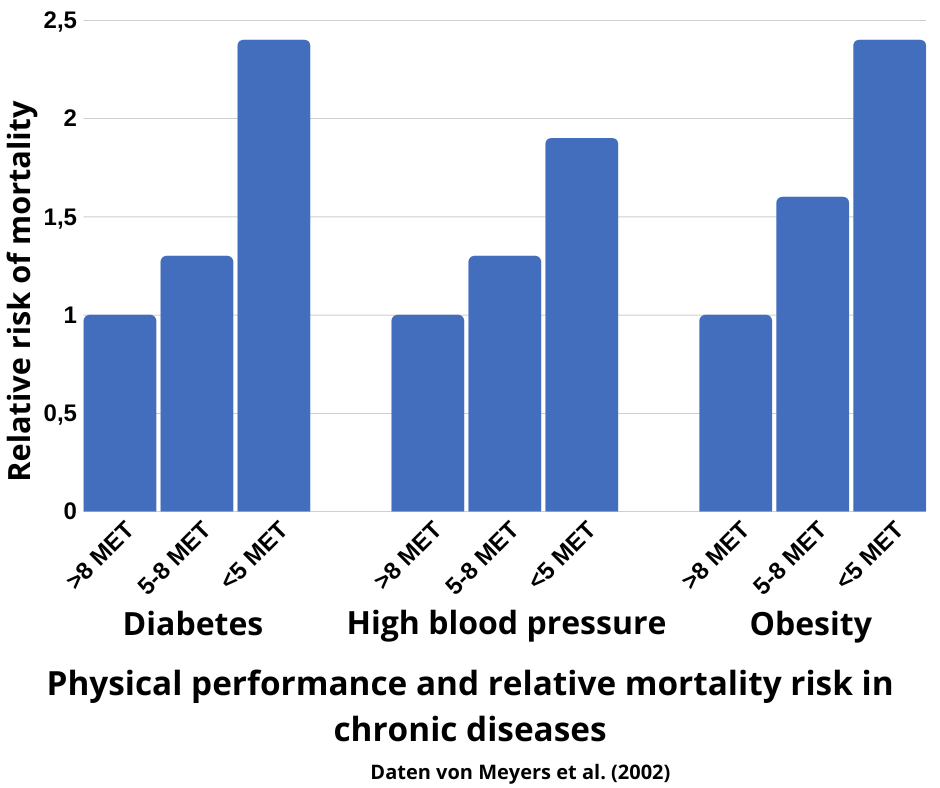
Physical fitness protects - despite illnesses
Those who are fitter have better functioning organs!
The reason for the higher life expectancy of fitter people is that fitness means nothing other than well-functioning organs.
To be physically fit, you need a well-functioning heart, healthy lungs and good healthy blood vessels to bring blood and oxygen to your muscles.
The nervous system, which controls the muscles to perform the task at hand, also has to function well and becomes more efficient through training. The stability of the bones must also be great in order to be able to convert the force of the muscles. So the bones of physically fit people do not break as easily.
Physical fitness is therefore nothing other than a sign of well-functioning organs and thus good health. And whats even better: If you become fitter, stronger and more endurant through training, your organs will also function better!
For example, if you can walk farther and faster by training today than you could a month ago, you have a better functioning heart, better functioning muscles, and better functioning blood circulation.
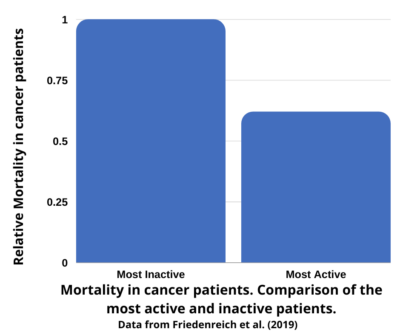
Those who are physically fit are less likely to get sick
Therefore, the risk of very many diseases decreases if you are physically fitter.
This also applies to diseases that you would not have thought of at first. For example in fit people, the immune system also functions better, which leads to infections not being as bad.
Very fit people are therefore much less likely to contract pneumonia, for example. This is because your immune system is able to fight infections in the respiratory tract before they can develop into a dangerous disease.
And even if you get sick with pneumonia, fit people have better chances of a mild course of the disease. This is because their lungs are more efficient in the first place and are therefore able to take in enough oxygen to supply their body, even if they no longer function as well due to pneumonia. (A study on this can be found here: Kunutsor et al. (2017)
Oxygen uptake capacity is the most common measure of endurance in sports science. So the better your endurance, the better your oxygen uptake, the better the function of your lungs and, also the function of your heart and the blood vessels that carry oxygen from your lungs to your body.
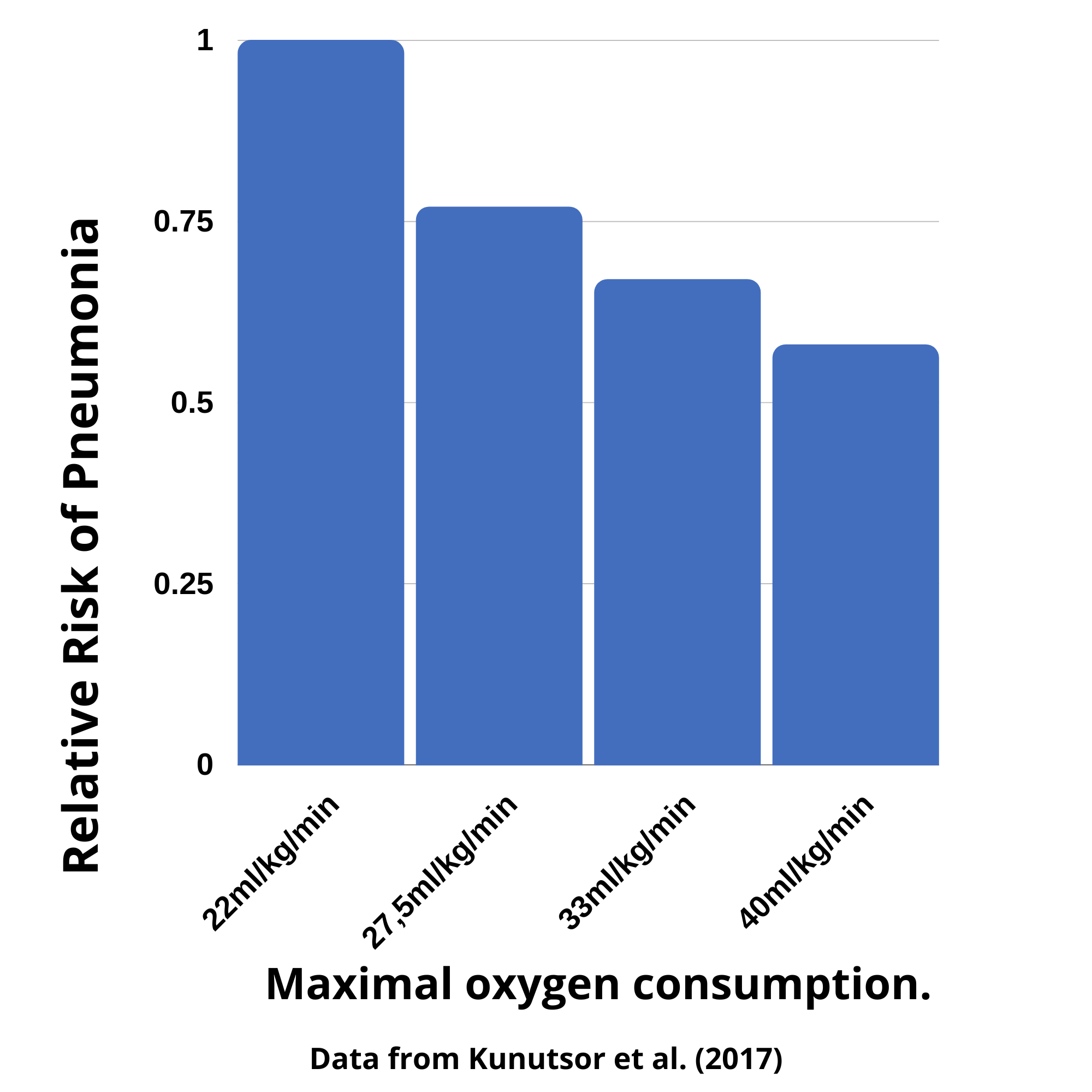
Better fitness means better functioning organs!
Physical activity is more difficult with polyneuropathy
So we see that fit people also have a higher life expectancy. Thus, one can expect that better physical fitness will improve life expectancy even if you have polyneuropathy.
Now, of course, it's harder to stay fit if you have polyneuropathy. Because if you are in pain with every step or have problems keeping your balance, you obviously can't exercise as easily as someone without limitations.
Therefore, I assume that the reduced life expectancy of people with polyneuropathy, is at least in part caused by the fact that people with polyneuropathy are physically less active and therefore less fit. As a result, their organs do no function as well, heart attacks, strokes, and falls are more common, and they get plenty of other problems associated with the lack of exercise.
Physical fitness increases the quality of life
But it's not just about increasing life expectancy. It is at least as important to maintain the QUALITY OF LIFE. And here, too, physical fitness plays a very important role.
After all, someone who is physically fit is able to do more and also to tolerate more than someone who already has difficulties with simple everyday things.
For example, those who are physically fit have no problems climbing stairs or carrying groceries. This makes life easier and allows for more fun activities. Last but not least, you are less likely to need the help of others if you are physically stronger.
So keeping physically fit is not just a health issue. It's not just about living as long as possible. In concrete terms, it's about living more comfortably.
You can stay fit despite polyneuropathy!
Those who remain active despite polyneuropathy benefit even more
So you see, especially with polyneuropathy, it's important to stay active anyway.
It is obvious that you are less active in everyday life because the disease simply makes life more difficult. That's why it's important to create routines for physical training.
For example, if you set fixed times for your workouts and work out on schedule during those times, you can make great progress with very little time commitment.
If you start training despite polyneuropathy, you usually have great success in the initial period. After some time, however, you reach a plateau where you can't improve further. After all, the disease causes limitations that you can't simply ignore. However, just keep going!
Keep in mind that it is already a huge success if you manage to maintain the current level of fitness despite polyneuropathy. Because people who don't exercise slowly but surely become weaker, shakier and ultimately less independent. You can at least slow down this process with targeted exercises.
Exercises to do at home
More information and special exercises for polyneuropathy can be found on my page "Exercise for Polyneuropathy".
There you will find numerous exercises as well as all the important information about the training. By the way, you can easily perform the training independently at home.
Exercise recommendations for diabetic polyneuropathy
To help yourself against polyneuropathy when it is triggered by diabetes you need to use targeted training for sugar metabolism in addition to balance training.
Everyone knows that diabetics should exercise a lot. However, very few people know that it is possible to specifically train the sugar metabolism. In fact, depending on how you move, the body can get the energy for movement from different sources. These are mainly sugar and fat. Therefore, to improve your diabetes you should do things that actually burn sugar. This is the case when doing things that require energy to be provided quickly. If you move slowly but steadily, such as walking, fat is used as the main source of energy. However, diabetics benefit more from burning sugar than fat.
For more information, see my page on training for diabetics:
Exercise recommendations for polyneuropathy due to chemotherapy.
After surviving cancer, many patients struggle with the physical consequences. In particular, those who have developed polyneuropathy as a result of chemotherapy have less confidence and exercise less.
However, cancer patients benefit in many ways from physical exercise. The relapse rate, and thus long-term life expectancy, is much more favorable in physically active people. This is particularly true for breast and colorectal cancer. A research group at the Dana-Farber Institute in Boston followed colorectal cancer patients over 12 years and compared their physical activity levels. Patients with the greatest physical activity were 53% less likely to die from colorectal cancer during these 12 years (Meyerhardt et al. 2009).
Of course, patients who were more seriously ill were also less active, and therefore there was a higher mortality in this group. However, most scientists now agree that physical training increases the chances of surviving cancer by 10-25%.
It is important to strengthen the entire body. That is, balance exercises for polyneuropathy should be supplemented with strength exercises to maintain muscle strength and bone strength. It is also very important to do endurance training because it improves heart and lung function and strengthens the immune system. Even brisk walking may be sufficient as endurance training. It is important not to overexert yourself physically during and after such a stressful illness, too.
Detailed information on training for cancer patients can be found here:
